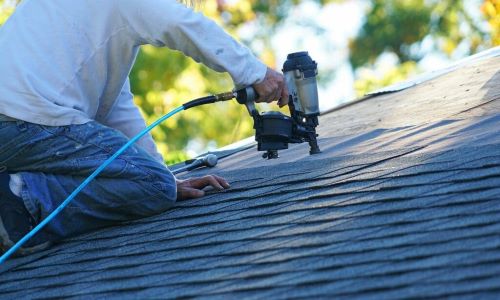The Comprehensive Guide to Commercial Roof Repairs
 By
By
Maintaining the integrity of a commercial roof is crucial for the safety, efficiency, and longevity of any business property. Timely roof repairs can prevent minor issues from becoming major problems, saving money and ensuring uninterrupted business operations. This guide explores common types of commercial roof repairs, the repair process, and tips for property managers and business owners.
Common Types of Commercial Roof Repairs
Commercial roofs are exposed to various environmental factors and wear over time, necessitating different types of repairs:
- Leak Repairs: One of the most common issues, leaks can result from damaged roofing materials, poor installation, or weather impact. Identifying the source and repairing it promptly is critical.
- Ponding Water Solutions: Flat roofs often suffer from water pooling, which can lead to leaks and structural damage. Proper drainage solutions and repairs are necessary to address this issue.
- Membrane Repairs: Roof membranes can develop cracks, blisters, or punctures, especially in single-ply roofing systems. These require immediate attention to prevent further damage.
- Flashing Repairs: Damaged or improperly installed flashing can allow water to penetrate the roof. Repairing or replacing flashing ensures a watertight seal around roof edges, vents, and skylights.
- Seam Repairs: In metal and membrane roofing systems, seams can deteriorate or come apart. Repairing or resealing seams prevents leaks and extends the roof's lifespan.
The Commercial Roof Repair Process
Understanding the repair process helps ensure that necessary actions are taken to maintain roof integrity:
- Inspection and Assessment: A thorough inspection identifies the extent of the damage and the best repair solutions. This step often involves visual checks and, if needed, infrared scans to detect hidden issues.
- Preparing the Roof: The affected area is cleaned and prepped for repair. This may include removing debris, dirt, and loose materials to ensure a solid bonding surface.
- Executing Repairs: Depending on the damage, repairs may involve patching leaks, resealing seams, replacing damaged sections, or installing new flashing. It's essential to use compatible materials to maintain the roof's integrity.
- Final Inspection: After repairs are completed, a final inspection ensures that all issues are addressed and the roof is in good condition. This step confirms the effectiveness of the repairs and the overall health of the roof.
Tips for Effective Commercial Roof Repairs
Here are some tips to help ensure successful commercial roof repairs:
- Schedule Regular Inspections: Regular roof inspections, at least twice a year, can help identify and address issues early, preventing costly repairs.
- Hire Experienced Professionals: Engage qualified roofing contractors with experience in commercial roof repairs to ensure high-quality work and compliance with safety standards.
- Act Promptly: Address any signs of damage or leaks immediately to prevent them from worsening and causing more significant problems.
- Use Quality Materials: Ensure that repairs are made using high-quality, compatible materials to maintain the roof's durability and performance.
- Maintain Detailed Records: Keep thorough records of all inspections, repairs, and maintenance activities for future reference and warranty claims.
Timely and effective commercial roof repairs are essential for maintaining the integrity and longevity of your building. By understanding common repair needs, following a structured repair process, and implementing best practices, you can ensure your roof remains in excellent condition. For expert assistance with commercial roof repairs, contact a trusted roofing contractor today.






